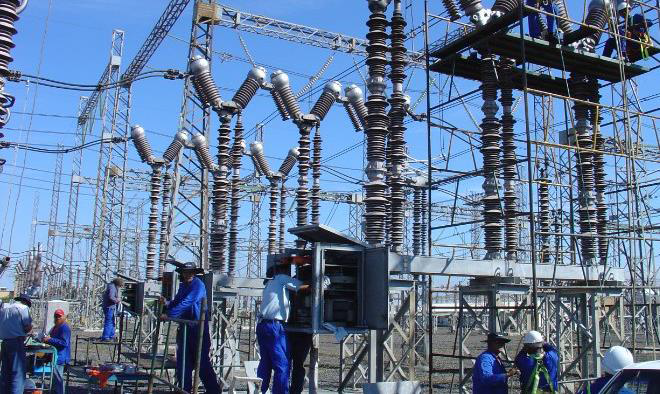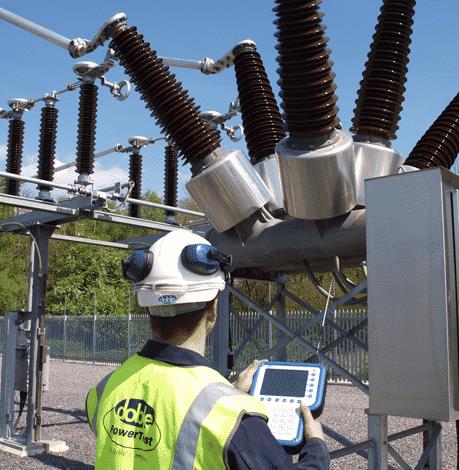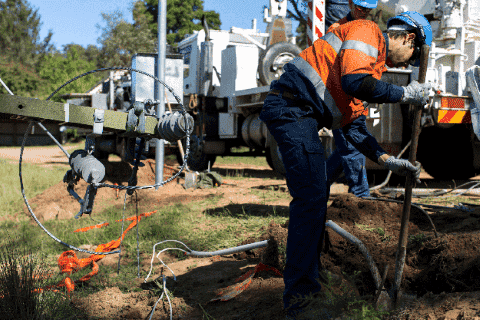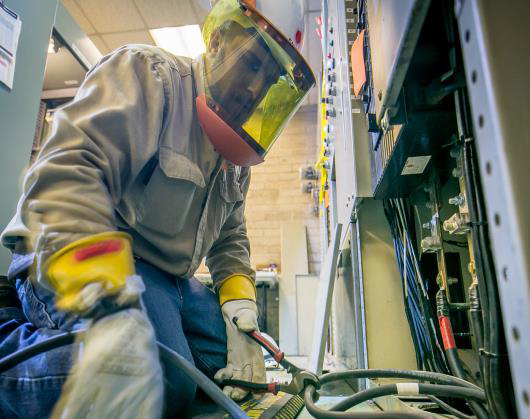COURSE OVERVIEW
EE0050 : HV/MV Substation Design, Installation, Commissioning, Testing, Operation, Control & Maintenance

OVERVIEW
| COURSE TITLE | : | EE0050 : HV/MV Substation Design, Installation, Commissioning, Testing, Operation, Control & Maintenance |
| COURSE DATE | : | Nov 03 - Nov 07 2024 |
| DURATION | : | 5 Days |
| INSTRUCTOR | : | Mr. Sherif Bayoumi |
| VENUE | : | Istanbul, Turkey |
| COURSE FEE | : | $ 6000 |
| Request For Course | ||
OTHER SCHEDULED DATES
| Date | : | Mar 03 - Mar 07 2024 (5 Days) | Location | : | Doha, Qatar | Classroom Fee (US$) | : | $ 6000 | Course Info |
| Date | : | May 12 - May 16 2024 (5 Days) | Location | : | Istanbul, Turkey | Classroom Fee (US$) | : | $ 6000 | Course Info |
| Date | : | Jul 21 - Jul 25 2024 (5 Days) | Location | : | Doha, Qatar | Classroom Fee (US$) | : | $ 6000 | Course Info |
| Date | : | Sep 15 - Sep 19 2024 (5 Days) | Location | : | Dubai, UAE | Classroom Fee (US$) | : | $ 5500 | Course Info |
| Date | : | Jan 05 - Jan 09 2025 (5 Days) | Location | : | Doha, Qatar | Classroom Fee (US$) | : | $ 6000 | Course Info |
| Date | : | Feb 22 - Feb 26 2025 (5 Days) | Location | : | Kuwait City, Kuwait | Classroom Fee (US$) | : | $ 5500 | Course Info |
| Date | : | Feb 23 - Feb 27 2025 (5 Days) | Location | : | Kuwait City, Kuwait | Classroom Fee (US$) | : | $ 5500 | Course Info |
| Date | : | Jul 26 - Jul 30 2025 (5 Days) | Location | : | Kuwait City, Kuwait | Classroom Fee (US$) | : | $ 5500 | Course Info |
| Date | : | Jul 27 - Jul 31 2025 (5 Days) | Location | : | Kuwait City, Kuwait | Classroom Fee (US$) | : | $ 5500 | Course Info |
Course Description
The electric power substation, whether generating station or transmission and distribution, remains one of the most challenging and exciting fields of electric power engineering. Recent technological developments have had tremendous impact on all aspects of substation design, operation, maintenance, safety, and grounding, testing and troubleshooting. A substation is a high – voltage electric system facility. It is used to switch generators, equipment, and circuits or lines in and out of a system. It is also used to change AC voltages from one level to another, and/or change alternating current to direct current or direct current to alternating current. Some substations are small with little more than a transformer and associated switches.
Others are very large with several transformers and dozens of switches and other equipment. Substations generally contain one or more transformers, and have switching, protection and control equipment. In a large substation, circuits breakers are used to interrupt any short-circuit or overload currents that may occur on the network. Smaller distribution stations may use Autoreclosers or even fuses for protection of branch circuits.
A typical substation will contain line termination structures, high-voltage switchgear, one or more power transformers, low voltage switchgear, surge protection, controls, and metering. Other devices such as power factor correction capacitors and voltage regulators may also be located at substation.
This course will introduce you to the equipment that makes up an electric substation. It will explain how each type of equipment operates and guide you through the control and wiring diagrams that control equipment operation. At this course you will learn about the latest diagnostic testing techniques for assessing the condition of substation equipment such as transformers, circuit breakers, load tap changers, switches, and associated equipment. Knowledge of equipment condition allows you to target your maintenance efforts to reduce equipment failures and improve substation reliability. The course will show you how to apply predictive diagnostic testing to reduce equipment failures and extend equipment life.
Applying predictive maintenance (PdM) methods can reduce your costs and improve the performance of your maintenance program. This course will show you methods and case studies that illustrate how to incorporate these new methods and testing techniques to improve reliability and optimize your existing maintenance program. You will study the latest testing technologies and how to apply them to determine the condition of oil and gas insulated transformers, circuit breakers, and other electrical equipment. Learn how these modern techniques allow determination of equipment condition without taking the equipment out of service.
Electrical substation safety is an important issue in utility networks as well as large industrial installations and requires adequate attention in the stages of system planning, design, installation, operation and maintenance. A number of serious accidents including fatalities occur every year in industrial establishments due to accidents involving electricity, resulting in huge financial losses and wasted man-hours. In this course, we will take a look at the theoretical aspects of safety as well as the practical and statutory issues.
Good substation grounding is very important for effective relaying and insulation of equipment; but the safety of the personnel is the governing criterion in the design of substation grounding. It usually consists of a bare wire grid, lain in the ground; all equipment grounding points, tanks, support structures, fences, shielding wires and poles, and so forth, are securely connected to it. The grounding resistance is reduced enough that a fault from high voltage to ground does not create such high potential gradients on the ground, and from the structures to ground, to present a safety hazard. Good overhead shielding is also essential for outdoor substations, so as to virtually eliminate the possibility of lighting directly string the equipment. Shielding is provided by overhead ground wires stretched across the substation or tall grounded poles. This course will discuss how to maintain, test, and inspect a proper grounding system for the electrical power substation.
Others are very large with several transformers and dozens of switches and other equipment. Substations generally contain one or more transformers, and have switching, protection and control equipment. In a large substation, circuits breakers are used to interrupt any short-circuit or overload currents that may occur on the network. Smaller distribution stations may use Autoreclosers or even fuses for protection of branch circuits.
A typical substation will contain line termination structures, high-voltage switchgear, one or more power transformers, low voltage switchgear, surge protection, controls, and metering. Other devices such as power factor correction capacitors and voltage regulators may also be located at substation.
This course will introduce you to the equipment that makes up an electric substation. It will explain how each type of equipment operates and guide you through the control and wiring diagrams that control equipment operation. At this course you will learn about the latest diagnostic testing techniques for assessing the condition of substation equipment such as transformers, circuit breakers, load tap changers, switches, and associated equipment. Knowledge of equipment condition allows you to target your maintenance efforts to reduce equipment failures and improve substation reliability. The course will show you how to apply predictive diagnostic testing to reduce equipment failures and extend equipment life.
Applying predictive maintenance (PdM) methods can reduce your costs and improve the performance of your maintenance program. This course will show you methods and case studies that illustrate how to incorporate these new methods and testing techniques to improve reliability and optimize your existing maintenance program. You will study the latest testing technologies and how to apply them to determine the condition of oil and gas insulated transformers, circuit breakers, and other electrical equipment. Learn how these modern techniques allow determination of equipment condition without taking the equipment out of service.
Electrical substation safety is an important issue in utility networks as well as large industrial installations and requires adequate attention in the stages of system planning, design, installation, operation and maintenance. A number of serious accidents including fatalities occur every year in industrial establishments due to accidents involving electricity, resulting in huge financial losses and wasted man-hours. In this course, we will take a look at the theoretical aspects of safety as well as the practical and statutory issues.
Good substation grounding is very important for effective relaying and insulation of equipment; but the safety of the personnel is the governing criterion in the design of substation grounding. It usually consists of a bare wire grid, lain in the ground; all equipment grounding points, tanks, support structures, fences, shielding wires and poles, and so forth, are securely connected to it. The grounding resistance is reduced enough that a fault from high voltage to ground does not create such high potential gradients on the ground, and from the structures to ground, to present a safety hazard. Good overhead shielding is also essential for outdoor substations, so as to virtually eliminate the possibility of lighting directly string the equipment. Shielding is provided by overhead ground wires stretched across the substation or tall grounded poles. This course will discuss how to maintain, test, and inspect a proper grounding system for the electrical power substation.
TRAINING METHODOLOGY
This interactive training course includes the following training methodologies:
LecturesWorkshops & Work Presentations
Case Studies & Practical Exercises
Videos, Software & Simulators
In an unlikely event, the course instructor may modify the above training methodology for technical reasons.
VIRTUAL TRAINING (IF APPLICABLE)
If this course is delivered online as a Virtual Training, the following limitations will be applicable:
| Certificates | : | Only soft copy certificates will be issued |
| Training Materials | : | Only soft copy materials will be issued |
| Training Methodology | : | 80% theory, 20% practical |
| Training Program | : | 4 hours per day, from 09:30 to 13:30 |
RELATED COURSES

EE0200 : Practical Troubleshooting of Electrical Equipments & Control Circuits
- Date: Dec 23 - Dec 26 / 3 Days
- Location: Dubai, UAE
- Course Details Register

EE0421 : Electrical Transformers & Switchgears Faults, Inspection, Testing, Maintenance & Troubleshooting
- Date: Dec 23 - Dec 27 / 3 Days
- Location: London, United Kingdom
- Course Details Register

EE0660 : Earthing, Bonding, Lightning & Surge Protection of Electrical & Electronic Systems and Equipment
- Date: Jan 20 - Jan 24 / 3 Days
- Location: Kuala Lumpur, Malaysia
- Course Details Register

EE0571 : Electrical Power Systems Coordination
- Date: Dec 22 - Dec 26 / 3 Days
- Location: Al Khobar, KSA
- Course Details Register
